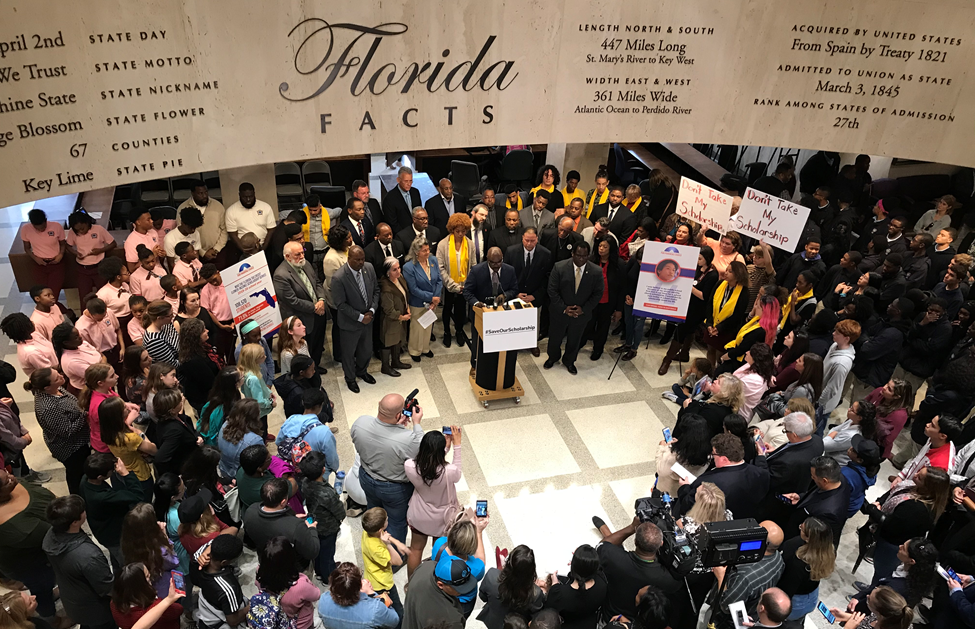
Editor’s note: On July 5, the Sarasota Herald-Tribune published an op-ed that named Step Up For Students, the nonprofit that hosts this blog, and made numerous errors about the scholarship programs Step Up administers. On July 6, Step Up’s director of policy and public affairs submitted a short rebuttal. By July 13, the opinions editor had given no word as to whether the response would be published and had not corrected the errors in the original piece, which has since been published in at least one other newspaper. We thought it appropriate to publish the rebuttal as submitted.
Choice strengthens public education
Over the past 20 years, Florida public schools rose from barrel-bottom to respectability, and are now, according to key academic indicators, better than they’ve ever been. This progress happened as the expansion of education choice in Florida became a bedrock organizing principle.
We can’t say for sure that more choice is why Florida now ranks No. 3 in success on Advanced Placement exams; No. 4 in K-12 achievement, according to Education Week; and No. 1, No. 1, No. 3 and No. 8 on the four core tests of the National Assessment of Educational Progress, once adjusted for demographics. But those outcomes sure do upend claims that choice has hurt public schools.
That festering falsehood and others aired in a fact-challenged July 5 op-ed. The author relied on tired myths to argue private school choice is draining money from public schools and took specific aim at the Florida Tax Credit Scholarship for low-income students. She also cast state funding for the newest choice program – the Family Empowerment Scholarship – as unprecedented, even though Florida’s use of direct public dollars for private education goes back at least 40 years.
Some basic math helps. A Florida Tax Credit Scholarship is worth 60 percent of average per-pupil spending in Florida public school. That’s why every independent financial analysis has found the scholarship saves taxpayer money – and none has found otherwise. Corporations contributed about $700 million to the program last year and did not “save a bundle,” as the op-ed claimed. In fact, they didn’t save a penny. They donated to a cause the state long ago deemed worthy – expanding educational opportunities for disadvantaged students – and received dollar-for-dollar tax credits in return.
Florida’s other “vouchers” encompass programs from pre-school to college. Most of them do not include income limits on eligibility. The state spends $400 million a year on VPK. It spends $200 million a year on McKay Scholarships for students with disabilities. It’s spent hundreds of millions on higher education scholarships, including Bright Futures, so students can defray tuition at private schools.
Why are critics only upset by the Florida Tax Credit Scholarship and Family Empowerment Scholarship – the only two programs that serve predominantly low-income students of color? There is no good answer.
The author is right that we must strengthen public education. The best available evidence suggests that’s what’s happening, with private school students making progress too. A 2019 Urban Institute study found tax credit scholarship students are up to 20 percent more likely than their public school peers to earn bachelor’s degrees. That’s encouraging.
That’s also what happens when diversity and equity become more central to public education, and when more parents have the power to determine the educational destinies of their children.


